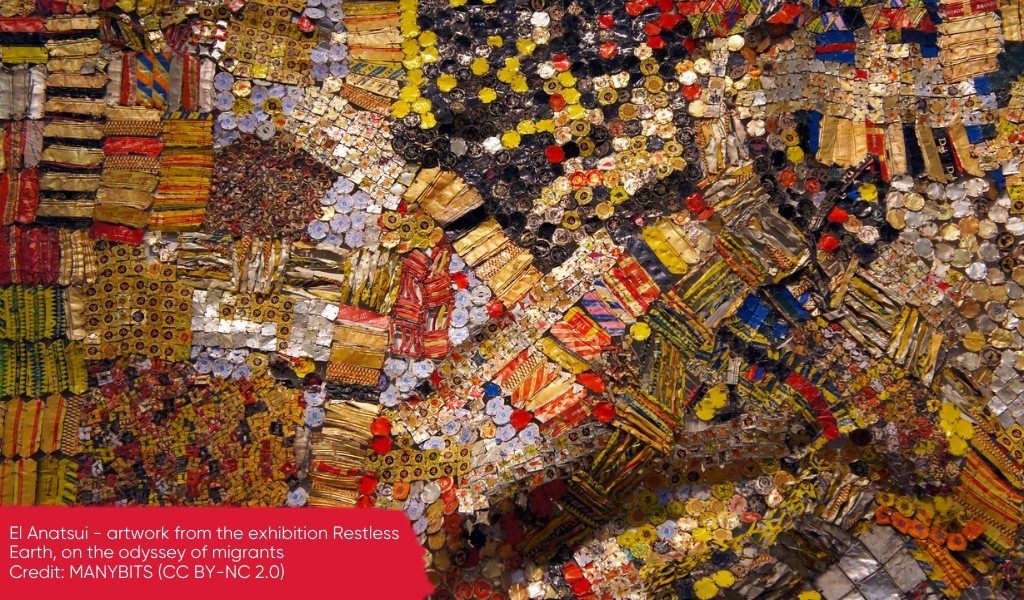In this blog, Pamela Hajal argues that humanitarian organisations and interventions need to take a “localisation” approach to ensure appropriate cultural integration in their programmes and improve their effectiveness and sustainability.

Credit: MANYBITS (CC BY-NC 2.0)
If you want to preserve the forest, should you not care for every tree? Imagine the forest to be the global picture, the global outcome, the global scenery. The trees and each species of tree are the local agents, the producers of continuity and prosperity. They are the engine of life!
So, you might be wondering, what do trees and forests have to do with cultural diversity and development?
I want to draw an analogy between nature and humanity, because few would deny that nature’s diversity and the interdependence between all organisms in the ecosystem are wisdom par excellence and essential for survival and sustainability. Similarly, depriving humanity of cultural diversity is eviscerating it of its spirit. Here we are posed with a major challenge facing humanitarian interventions.
Humanitarian interventions still parachuting technical expertise with little regard for local culture
In 2016, the first World Humanitarian Summit tackled the hindrances and barriers that humanitarian interventions in man-made crises and natural disasters are confronted with, highlighting the importance of localisation: “As local as possible, as international as necessary” states the Grand Bargain 2016, a unique agreement between some of the largest donors and humanitarian organisations who have committed to get more means into the hands of people in need and to improve the effectiveness and efficiency of the humanitarian action. However, it overlooked cultural sensitivities and differences. When it comes to humanitarian crises, the parachuting of technical expertise and strategies is a top-down process. Without appropriate cultural integration it can backfire (as was documented with the Ebola crisis).
Given the significant investment in this sector, this needs to be urgently addressed because humanitarian assistance cannot maintain sustainability if it is not built upon a solid comprehension of the multiple facets of local culture. Being a stranger to local culture can result in humanitarians finding themselves trapped by fear; fear of crossing red lines and fear from misunderstanding. This entanglement paralyses the programme, making it completely ineffectual.
Cultural integration cannot be accomplished without localisation
Localisation is about taking a holistic approach to appropriately contextualise a programme, beyond merely carrying out a local consultation exercise. It requires involving locals at the very foundation of the programme design. All stakeholders should be represented in planning and decision-making. This diversification helps bring different perspectives and ideas to the table, leading to dynamic innovation and creativity.
Localisation also ensures cultural appropriateness so that local values are respected. At the same time they can be debated, which is especially important when it comes to matters related to gender equality and other issues that may constitute a challenge to the programme. Ultimately, this leads to greater impact and sustainability.
Failing to take into account local culture can backfire
I have witnessed two such programmes where organisations did not take into account local cultural values and social taboos.
Parenting skills was a programme aimed at people with parenting responsibilities to children and adolescents and implemented in Lebanon, and that’s where there was an upheaval. Educating adolescents on safe sex and promoting oral contraceptive pills among young girls was a taboo in this religiously practicing community, therefore, this section had to be removed from the parenting skills training curriculum for the organisation to be accepted and to reduce cultural sensitivity.
Another example is a programme that was designed to raise awareness of gender-based violence. Women who were invited to participate in the training were reluctant because of the cultural sensitivity of the topic. For many of these women, acts of domestic violence and aggression were normal forms of discipline that a woman could expect to receive from her husband.
Despite their good intentions, the international organisations involved struggled to be accepted by the local community; they were perceived as western organisations who were challenging the refugees’ cultural norms rather than as agents working for the benefit of the women and the wider community. The approach to tackle such issues should have taken into consideration local cultures and should have fed the intervention’s framing.
Lessons learned
Internationalisation deriving from globalisation tends to see the world as monochrome, yet social, cultural, and conflictual matters are complex in nature. Overlooking or underestimating complexity results in humanitarian assistance organisations producing unintended harm through their programmes. Sometimes the same mistakes are made again and again. Having trouble assimilating the organic nature of culture, organisations will always find themselves trapped in a vicious circle.
All humanitarian actors should take stock, promote cultural diversity and build their responses in line with local cultures and capacities, to meet people’s needs and to reach sustainable developmental outcomes.

